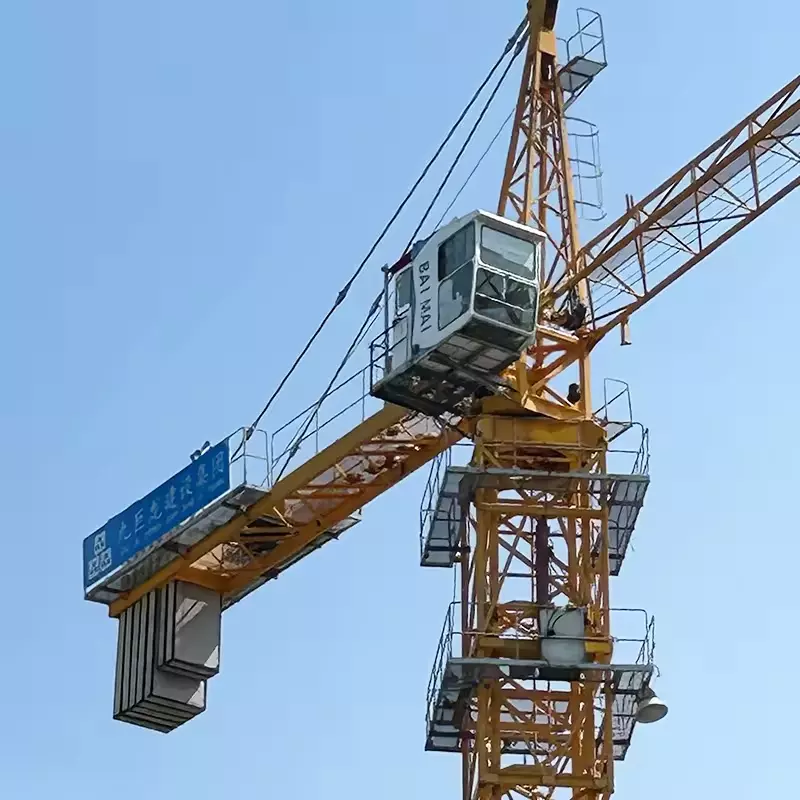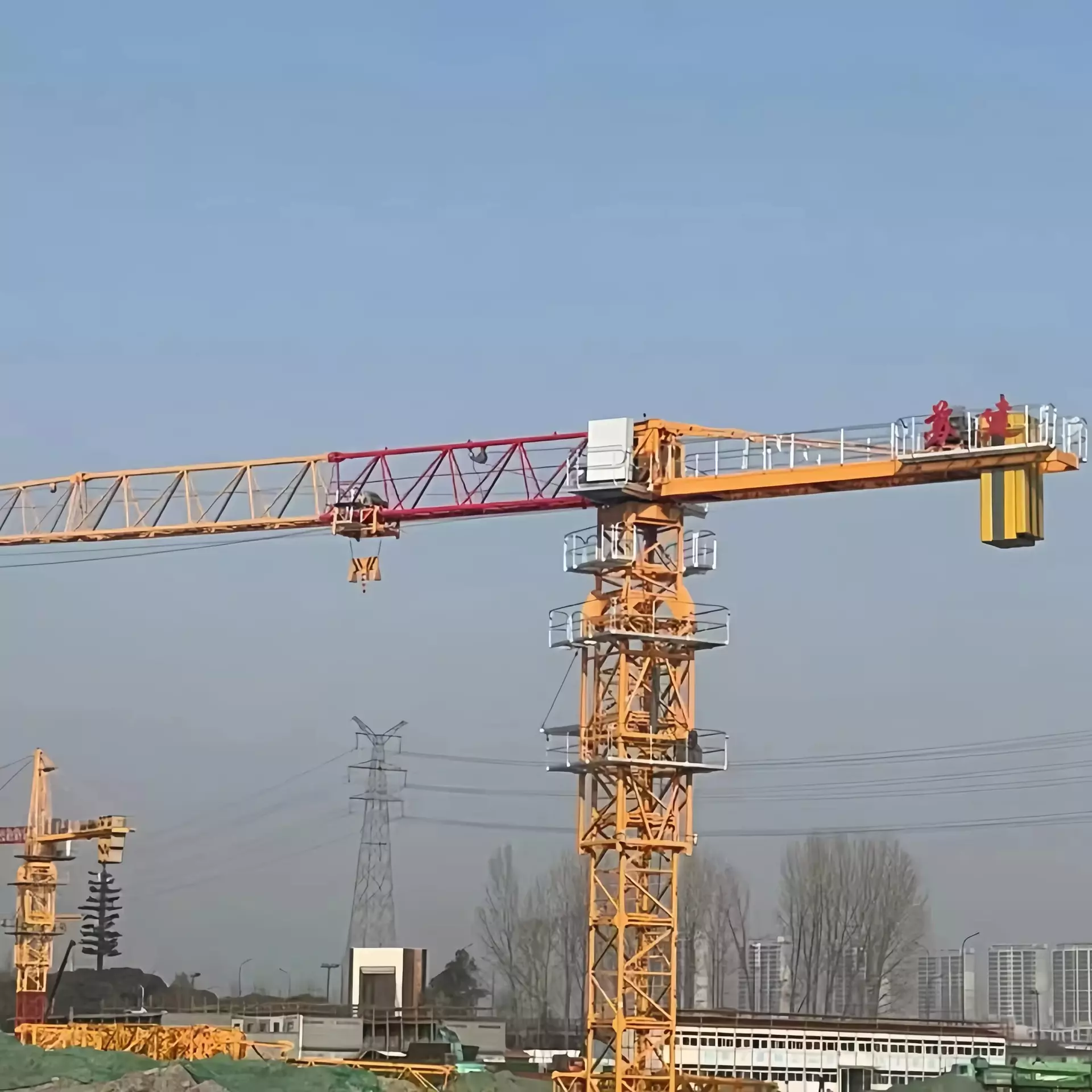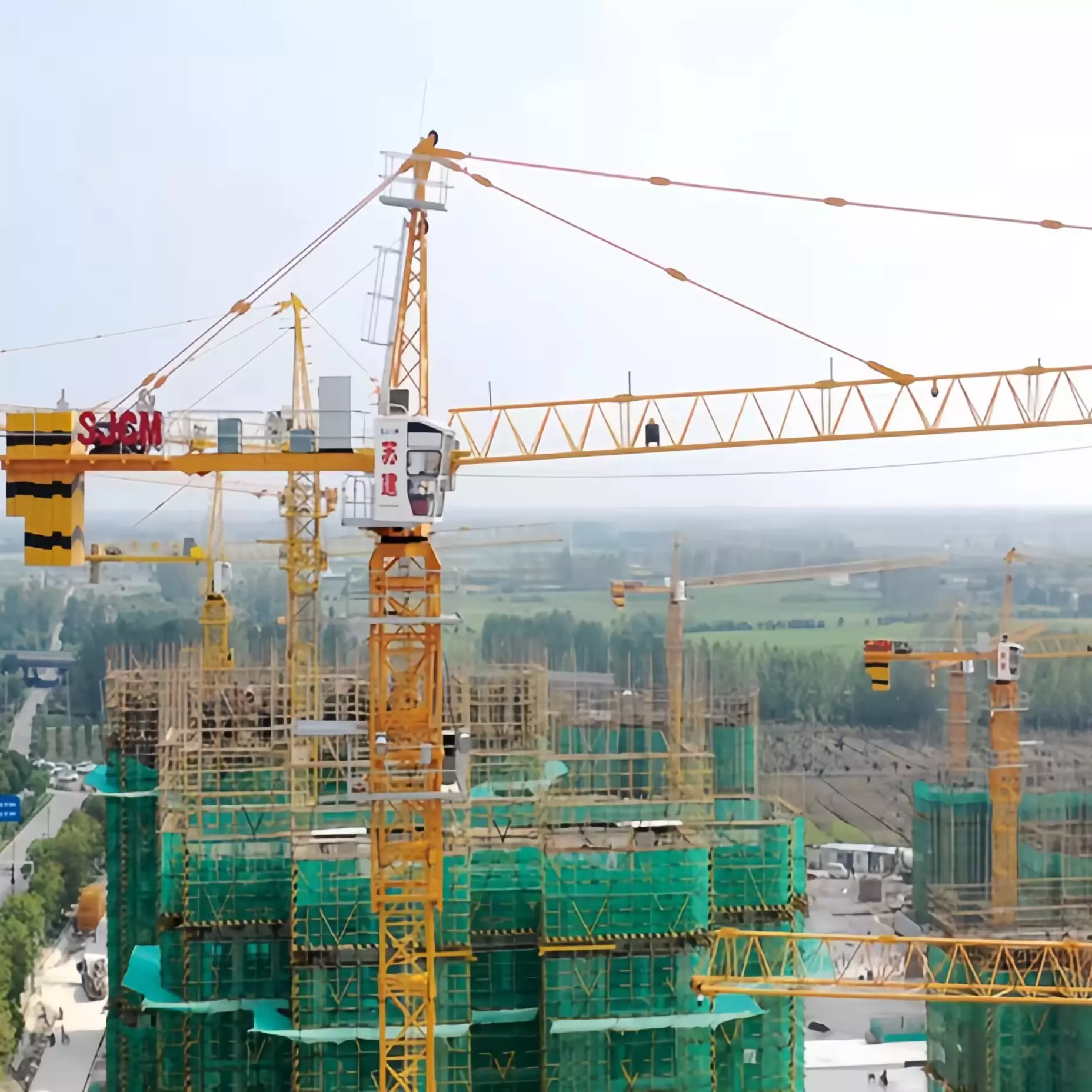Tower cranes, with their towering structures, extensive operational reach, and highly efficient transport capabilities, have become the “aerial hubs” of modern construction. Their designs continue to evolve toward greater intelligence and safety, though this requires balancing cost and flexibility, making them best suited for long-term, fixed large-scale projects.



Tower Body:The tower body employs a truss structure or solid cross-section, with height adjustment achieved through modular sections to accommodate construction requirements at different floor levels.It is anchored to the ground via a concrete foundation for stability, and certain models can be attached to existing structures to reduce independent height restrictions.
Horizontal Jib and Counterjib:The horizontal boom (lifting arm) handles material hoisting, while the counterweight arm balances the overturning moment of the lifting arm, creating a stable structure. Booms can be fixed or variable-reach (e.g., trolley-type or luffing-type), allowing flexible adjustment of the working range.
Top Cabin:The operator's cabin is located at the tower top or on the tower side, providing elevated visibility for precise control of lifting operations.
Integrated Vertical and Horizontal Material Handling:Simultaneously performs vertical lifting (e.g., rebar, concrete) and horizontal movement (across floors or construction zones), achieving higher efficiency than truck cranes or crawler cranes.
Extensive Lifting Height and Reach:Independent height ranges from 40 to 80 meters, extending beyond 200 meters when attached to structures, meeting the demands of super high-rise construction.boom lengths typically range from 30 to 80 meters, providing extensive coverage and reducing equipment relocation frequency.
Multi-Mechanism Coordinated Operation:Equipped with three primary mechanisms—hoisting, luffing, and slewing—it achieves composite actions (e.g., simultaneous hoisting and slewing) through an electrical control system, enhancing operational flexibility.
Core Equipment for High-Rise Construction:Widely used in residential buildings, commercial complexes, bridges, and other projects, particularly suited for confined sites or densely populated construction zones.
Modularity and Dismantlability:Tower sections, booms, and other components can be rapidly assembled and disassembled, facilitating transportation between sites and enabling reuse across multiple projects.
Adaptability to Complex Environments:Operates in wind speeds ≤20m/s (Category 8 winds). Select models feature typhoon-resistant design, making them suitable for coastal or windy regions.